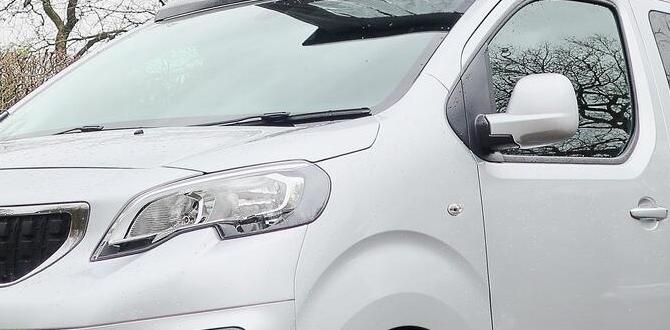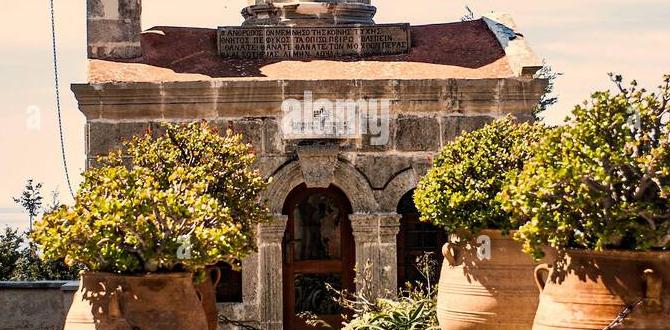This Basque Country public transport cheat sheet will make your travels smooth and stress-free. Discover how to navigate trains, buses, and trams efficiently across charming cities like Bilbao, San Sebastián, and Vitoria-Gasteiz. Get ready for affordable, convenient journeys with our expert guide.
Navigating a new region can sometimes feel a bit overwhelming, especially when it comes to getting around. You might be wondering just how easy it is to hop between the stunning coastlines and vibrant cities of the Basque Country. Will you need a car, or are there simpler ways to explore? Thankfully, Basque Country boasts a fantastic public transport system that’s both efficient and budget-friendly. This guide is your secret weapon to unlocking the best of the region without the hassle. We’ll walk you through everything you need to know, so you can relax and enjoy the incredible scenery and culture. Get ready to travel like a local!
Your Basque Country Public Transport Cheat Sheet: Getting Around Like a Pro
The Basque Country, a captivating region straddling northern Spain and southwestern France, is a treasure trove of culture, cuisine, and breathtaking landscapes. Whether you’re planning to explore the Guggenheim Museum in Bilbao, indulge in pintxos in San Sebastián, or wander through the historic streets of Vitoria-Gasteiz, understanding its public transport is key to a seamless adventure. This cheat sheet is designed for beginners, simplifying the process so you can focus on enjoying your trip. We’ll cover trains, buses, trams, and even local urban transport, offering practical tips and essential information.
Understanding the Public Transport Landscape
The Basque Country offers a well-integrated network of public transportation, making it easy to travel between major cities and smaller towns. The primary modes of transport include:
- Trains: Operated by both Renfe (the national railway company) and Euskotren (the regional railway company), trains are excellent for inter-city travel.
- Buses: An extensive bus network connects virtually every town and village, offering flexibility and reaching areas not served by trains.
- Trams: Primarily found in the larger cities like Bilbao, trams provide convenient local travel.
- Metro: Bilbao features a modern metro system that is very efficient for navigating the city.
For the most up-to-date information and to plan your journeys, it’s always a good idea to check the official websites of the transport operators. Renfe offers comprehensive national and regional train schedules, while Euskotren is your go-to for the regional train network. For bus routes and schedules, companies like Pesa and La Unión often serve different areas. Don’t forget that many local transport systems have their own apps or websites for real-time information, which can be a lifesaver when you’re on the move.
Navigating the Train Network
Trains are a fantastic way to travel between the main cities of the Basque Country. You’ll primarily encounter two main operators:
Renfe (Red Nacional de los Ferrocarriles Españoles)
Renfe operates the main Spanish rail network, including high-speed (AVE) and regional services. While AVE doesn’t directly serve all Basque cities within the region itself, it connects major Spanish hubs to cities like Bilbao and San Sebastián, making it a viable option for longer journeys to or from the Basque Country.
- Services: Offers long-distance, medium-distance, and suburban trains.
- Key Routes: Connects major cities like Madrid and Barcelona to gateways of the Basque Country, and also provides some regional connections.
- Booking: Tickets can be purchased online through the Renfe website, at station ticket offices, or via ticket machines. Booking in advance is recommended for high-speed services to secure better prices.
Euskotren
Euskotren is the cornerstone of regional rail travel within the Basque Country. It’s an excellent, affordable option for hopping between cities and towns within the region.
- Services: Operates a network of commuter and interurban trains.
- Key Routes:
- Bilbao–San Sebastián: A very popular and scenic route.
- Bilbao–Durango–Eibar: Connects Bilbao with several important inland towns.
- Metro Bilbao: Euskotren also operates Bilbao’s metro system, which is incredibly useful for getting around the metropolitan area.
- Booking: Tickets can be bought at Euskotren’s stations. They also offer rechargeable travel cards, which can be convenient if you plan to travel extensively within their network.
Pro Tip: For seamless travel, consider using a Mugi or Barik card if you plan to use both Euskotren and local public transport in Gipuzkoa and Bizkaia, respectively. These cards offer discounted fares and make boarding much quicker.
Exploring by Bus: the Backbone of Regional Travel
Buses are indispensable for reaching smaller towns and villages, and they also offer a reliable alternative for inter-city travel. Several companies operate routes throughout the Basque Country.
Key Bus Operators and Services
- Pesa (Autobuses La Unión): A major operator in Gipuzkoa, connecting San Sebastián with many surrounding towns and villages, as well as other provincial capitals.
- Bizkaibus: This is the public bus network for Bizkaia (the province where Bilbao is located). It offers extensive routes connecting Bilbao with towns across the province, serving both coastal and inland areas.
- Valladolid–Logroño–Zaragoza (ALSA): While ALSA is a national operator, it serves key routes that connect the Basque Country to other regions in Spain.
Planning Your Bus Journey:
The best way to find specific routes, schedules, and ticket information is to visit the individual operator websites. Many of these companies have user-friendly journey planners.
- Pesa (Gipuzkoa): www.pesa.net
- Bizkaibus (Bizkaia): Information is usually found on the provincial council’s transport section (e.g., www.bizkaia.eus/bizkaibus). Look for schedules and route maps here.
Bus Station Information:
Major cities have central bus stations (Estación de Autobuses) where you can buy tickets and find information. For example, the Termibus in Bilbao and the Estación de Autobuses de San Sebastián are key hubs.
Booking Bus Tickets:
Tickets can usually be purchased directly from the bus driver (especially on smaller routes), at the ticket counter in bus stations, or sometimes online via the operator’s website.
Advantages of Bus Travel:
- Extensive Reach: Serves almost every corner of the region.
- Flexibility: Frequent services on popular routes.
- Affordability: Often a more budget-friendly option than trains for shorter distances.
- Scenery: Allows you to see more of the Basque countryside.
Urban Transport: Getting Around the Cities
Once you arrive in a city, you’ll find excellent local public transport options to explore its attractions.
Bilbao
- Metro Bilbao: Operated by Euskotren, this modern metro goes through the heart of the city and extends to surrounding areas. It’s efficient, clean, and easy to use.
- Trams (Tranvía de Bilbao): A scenic tram line runs along the Nervión River, connecting various points of interest.
- Buses (Bilbobus): The local bus network covers areas not served by the metro or tram.
- Travel Card: The Barik card is a rechargeable card valid for most public transport in Bizkaia, including Metro Bilbao, Bilbobus, and Bizkaibus. It offers discounted fares compared to single tickets. You can purchase and top it up at metro stations and tobacco shops (estancos).
San Sebastián
- Urban Buses (Dbus): San Sebastián has an excellent municipal bus service, Dbus, covering the entire city with frequent routes.
- Travel Card: The Mugi card is the integrated travel card for Gipuzkoa. It can be used on Dbus, Euskotren (regional trains and trams), and other local buses in the province. Rechargeable and also available as a personalized card for maximum discounts.
- Walking and Cycling: The city center is very walkable, and renting a bike is a great way to explore the promenade along La Concha beach.
Vitoria-Gasteiz
- Urban Buses (TUVISA): The main bus operator in Vitoria-Gasteiz, with a comprehensive network.
- Trams (Tranvía de Vitoria-Gasteiz): A modern tram system serves key corridors of the city.
- Travel Card: While Vitoria-Gasteiz has its own local transport system, the Mugi card might be usable on some services or future integrated systems as the region moves towards wider integration. It’s always worth checking the latest regulations for integrated travel cards.
For Parents Traveling with Children:
When traveling with little ones, comfort and convenience are paramount. Modern public transport in the Basque Country is generally accessible. Many buses and trams have designated spaces for strollers. If you’re using adult diapers for yourself or child diapers for your little one, ensuring you have a comfortable and reliable supply is crucial. Pack a travel-friendly changing kit. Brands offering discreet and highly absorbent adult diapers, or specialized child diapers designed for long trips, can make a huge difference in ensuring everyone’s comfort, whether it’s on a long train ride or a day of exploring. Planning ahead for these essentials means less worry and more enjoyment for the whole family.
Essential Terminology and Tips
Knowing a few basic terms can be helpful:
- Billete: Ticket
- Ida y vuelta: Round trip
- Solo ida: One way
- Andén / Vía: Platform / Track
- Estación: Station
- Parada: Stop
- Horario: Schedule
- Taquilla: Ticket office
- Máquina expendedora: Ticket vending machine
Money-Saving Tips:
- Travel Cards: As mentioned, Barik (Bizkaia) and Mugi (Gipuzkoa) cards offer significant savings compared to single tickets, especially if you make multiple journeys.
- Family Tickets: Check if any operators offer family discounts, though these are less common than individual travel card benefits.
- Advance Booking: For Renfe long-distance trains, booking early can yield substantial discounts.
- Compare Options: For inter-city travel, quickly compare train and bus prices and schedules. Sometimes one is significantly cheaper or more convenient than the other.
General Travel Advice:
- Check Schedules: Always verify the latest schedules online or at the station, especially on weekends or holidays.
- Be Punctual: Arrive at the station or stop a few minutes before the scheduled departure time.
- Luggage: Most trains and buses have designated luggage areas. For longer journeys, ensure your luggage is manageable. If you have extra-large or bulky items, check with the operator in advance.
- Accessibility: If you have mobility issues or require specific assistance (e.g., ramps for wheelchairs), contact the transport company in advance. Many modern systems are designed to be accessible.
- Food & Drink: For longer journeys, you might want to pack a few snacks and water. While some long-distance trains might have a café car, it’s not guaranteed on all services.
Comparing Transport Options: A Quick Overview
Here’s a handy table to help you decide which transport option is best for your needs:
| Mode of Transport | Best For | Pros | Cons | Typical Cost (Indicative) |
|---|---|---|---|---|
| Regional Trains (Euskotren) | Inter-city travel within the Basque Country (e.g., Bilbao-San Sebastián) | Scenic, efficient, frequent on main routes, comfortable. Good for avoiding city traffic. | Can be slightly more expensive than buses for short distances. Stations might be outside the absolute city center for some smaller towns. | €5 – €15 per journey (depending on distance) |
| Long-Distance Trains (Renfe) | Travel to/from Basque Country from other Spanish cities. | Fastest for long distances, comfortable, good network coverage from major hubs. | Can be more expensive, especially if not booked in advance. Not ideal for intra-Basque Country travel unless connecting from a major hub. | €30+ (variable based on route and booking time) |
| Inter-city Buses (Pesa, Bizkaibus) | Reaching smaller towns, connecting cities, budget travel. | Extensive network, often reaches smaller villages, generally affordable. Good for last-mile connections. | Can be slower than trains due to traffic and multiple stops. Comfort level can vary by operator. | €3 – €10 per journey (depending on distance) |
| Urban Metro/Tram (Bilbao, Vitoria-Gasteiz) | Navigating within major cities like Bilbao. | Fast, efficient, avoids traffic, frequent service, integrated travel cards save money. | Limited to specific urban corridors. | €1.50 – €3 per journey (less with travel cards) |
| Urban Buses (Dbus, Bilbobus, TUVISA) | Getting around cities and suburbs, reaching areas not served by metro/tram. | Covers most areas, flexible, affordable with travel cards. | Can be affected by traffic. Finding the right route and schedule can sometimes take a moment. | €1.50 – €3 per journey (less with travel cards) |
Planning Your Trip with Confidence
One of the most reassuring aspects of traveling with children is having essential supplies readily available. For parents needing to manage children’s bladder control or looking for travel-friendly diaper solutions, planning is key. Consider brands that offer discreet, highly absorbent, and comfortable child diapers, perfect for long journeys or days out. Similarly, for adults who may need adult diapers for comfort, discretion, or longer trips, choosing the right product can significantly enhance travel peace of mind. Ensuring you have an adequate supply of these necessities packed in an accessible bag means you can handle any situation with confidence and focus on enjoying your Basque adventure. Journey Essentials is all about making these practical aspects effortless, so you can embrace the journey.
Considerations for Solo Travelers and Families
Solo Travelers: Public transport in the Basque Country is generally safe and reliable. Being aware of your surroundings and keeping valuables secure is standard travel practice anywhere. Using travel cards like Barik and Mugi will save you money and hassle, allowing you to move around freely and spontaneously. Apps for public transport can be your best friend for real-time navigation.
Families: For families, especially with young children, public transport is a practical choice. Buses often have more space for strollers than metro trains, and having a travel card means you don’t constantly need to buy single tickets. If you’re traveling with children who require child diapers, pack more than you think you’ll need. A small backpack with essential changes, wipes, and perhaps a portable changing mat can be a lifesaver. For parents who also require adult diapers for comfort or other reasons during travel, ensure you’ve packed your own supply in an easily accessible manner. This foresight reduces stress and allows everyone to enjoy the trip.
Connecting to Airports
Getting to and from airports is usually straightforward:
- Bilbao Airport (BIO): Bizkaibus line A3247 connects the city center of Bilbao (from Termibus and Plaza Moyua) directly to the airport. It’s frequent and affordable.
- San Sebastián Airport (EAS): This is a smaller airport, primarily serving seasonal flights. For major international travel, most people fly into Bilbao or Biarritz (France). If you are using San Sebastián Airport, local buses or taxis are available.
- Vitoria-Gasteiz Airport (VIT): Primarily serves domestic flights. Buses connect the city center to the airport.
For international travel or a wider choice of airlines, you might consider flying into Bilbao or even Biarritz in France, from where you can then use buses or trains to reach your final destination in the Basque Country.






